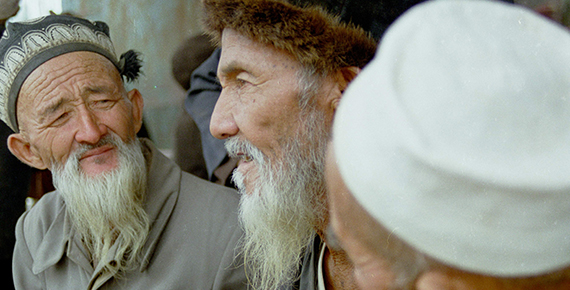Groundhog Day, a film released in 1993, centers on the character of Phil Connors, a self-righteous, selfish, thoughtless and loveless individual who repeatedly lives the same day. By continuously living the same day, Connors in time is rescued from his former despicable self and transforms into a completely different person. What has been happening in East Turkestan in recent years gives everyone a feeling like that in Groundhog Day. After each bloody incident, the same sentences are uttered from everyone’s mouths. After each incident Chinese officials still blame the “internal center” which receives support from external centers. Beijing tries to explain the unrest by never holding itself accountable for the regional occurrences, and by trying to remain oblivious to the social, cultural, religious, and identity-related dimensions of the situation. While the dozens of deaths and hundreds of arrests which occur each time are presented in newspapers in small squares which escape our attention, this silence is gradually becoming unbearable for the Uyghur people. After each incident, the East Turkestan question never goes beyond becoming merely an example in a sentence about the atrocities across the globe.
Therefore, what is written after each incident never provides a different environment and context than what was written previously. We witness that nothing changes. It’s always the same film. Neither the change in the Chinese leadership, nor economic development, nor integration with the world generates even the slightest progress in China’s approach to the subject. Neither a positive step nor an attempt at problem-solving can be seen. Unlike Phil Connors in Groundhog Day, the smug attitude and despicability increases even more.
As the fourth anniversary of the 2009 events in Urumqi and the holy month of Ramadan are approaching, East Turkestan is once again beginning to relive these events to which we have become accustomed without even realizing it. First, a series of events took place in Turpan in which 35 people lost their lives, according to official figures—although we will never find out the details. Immediately afterwards, there came news of conflicts in the southern city of Hoten in which people were again killed, with the number of deaths remaining unknown. Afterwards Chinese officials made statements which, as always, blamed the events on an Islamist, separatist and foreign-funded group. The language was the same as that used two months ago in Kashgar, four years ago in Urumqi, and countless times before regarding other regions. According to the Chinese authorities, while everyone in the region is living in happiness, peace, safety and prosperity under the vast freedoms provided, external elements are penetrating the region with the help of external forces and doing everything in their power to ruin this beautiful environment. While no rational observer still believes this, for China this has all become a matter of standard operation procedure. Some scapegoats are created while events are ongoing, and later anyone who can “create problems” is detained in large-scale public-order operations.
Although the story presented by the People’s Republic of China may not be very convincing, the implemented media blackout does not allow for the dissemination of much information. While this situation produces more question marks about an event, it leads to the public remaining ignorant after the incident regarding human rights violations.
The conversion of Urumqi into a garrison after the events in Turpan and Hoten, and the conversion of other cities in the region into an open-air prison with a security quarantine further reveal the problematic status of the Chinese government’s approach to this issue. Let alone not discussing a solution, the Chinese government’s refusal to give up its denial of the existence of a problem not only alienates Uyghurs, but also fosters deep anti-Uyghur sentiments among the Han Chinese brought to the region by the trainload.



